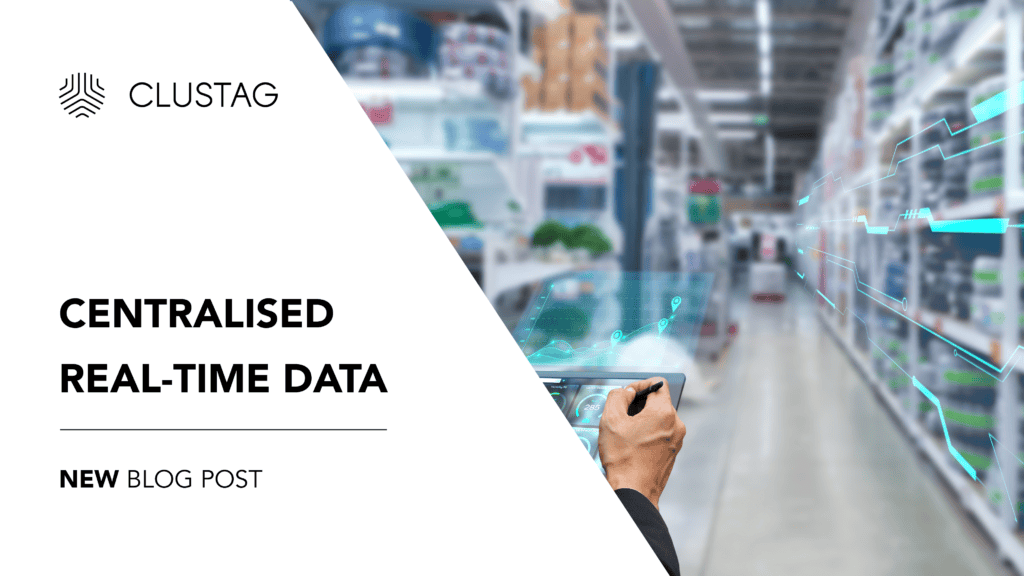
RFID Centralised Data for retailers are under pressure to maximise basket value, deliver great customer experiences, improve customer retention and reduce acquisition costs. What if there was a technology solution that could benefit all of these areas? With Centralised Real-Time Data is possible.
With customer expectations higher than ever, retailers are keen to meet those high expectations and must deliver excellence in each aspect. According to Qualtrics, 80% of consumers have switched brands following a poor customer experience.
Whether that’s the result of an incorrect order, a poor returns experience, or stock issues, retailers need to be aware that poor experiences have a lasting impact on brand loyalty and advocacy. That, in itself, is reason for concern. Worse still, findings from Propel Software suggest that 54% of consumers would stop using a brand after just one bad experience.
The State of Retail in RFID Centralised Data
While it might be easy to place the blame of any customer experience issues on shop floor operations, supply chain problems in retail are often just as guilty for customers’ poor experiences, particularly as online shopping – while not at the levels seen during the pandemic – is still 35% higher in the UK (Europe’s biggest e-commerce market) than pre-2020 figures, according to the Office for National Statistics.
In addition to brand concerns, reducing waste, transport and storage costs and maximising efficiency in restocking are all areas that can have a knock-on effect in improving customer experience while also benefiting the bottom line. With many retailers managing multiple retail channels across in-store, web, and third-party sales platforms, accurate inventory management is vital to minimising poor customer experiences through incorrect or wrongly allocated stock levels.
Inventory management technology has become more prevalent in recent years, and with good reason. Traditional stock management methods often fail to consider the myriad of sales platforms now available to retailers and can’t deliver the required omnichannel stock view.

The Role of Technology in Intralogistics
A high-quality logistics management system is crucial to delivering on customer expectations. RFID represents the holy grail of inventory management, and effective solutions can provide real-time stock information that is accurate and reliable. The technology is clearly working for retailers. In Accenture’s 2020 RFID in Retail study, 80% said the benefits of RFID cannot be replicated by any other technology.
Clustag’s patented MOT RFID massive scanning solution brings high quality speed and accuracy to bulk fulfilment and shipping processes, representing a new era in the RFID tunnels industry. Scanning products at item-level and comparing with expected content, Clustag’s technology enables retailers to enhance supply chain efficiency with highly accurate, fast and reliable warehouse operations. This empowers retailers to create highly efficient replenishment across all locations.
Creating Value Through RFID Centralised Data
Manolo Reguart, Director of Strategy and Bussiness Development, RIELEC – Clustag, believes retailers are yet to uncover the full range of benefits that RFID can provide. “While RFID is a technology that has existed for decades, its market penetration remains relatively low within retail.
“The reality is that many remain uneducated on the vast benefits that the technology can deliver to a business. The speed and accuracy that RFID can provide across all retail operations opens a huge number of opportunities for retailers that can deliver a significant return on investment.”
Clustag’s RFID MOT Station solution can scan products at item-level in an enclosed unit, allowing scanners to be used at full power to maximise accuracy and minimise any risk of cross-reading. With 99.92% reading accuracy, the MOT station automates the inventory management process for retail, scanning up to 1,000 boxes per hour while tracking products at item level.
The technology enables retailers to minimise time spent manually tracking inventory, allowing customers to reallocate labour resources within their warehouses. Equipped with real-time visibility of their inventory across the supply chain, retailers can make better decisions, faster. They can minimise waste, maintain replenishment across all locations and process returns quicker.
Ultimately, Clustag’s technology allows retailers to streamline their intralogistic operations, maximise sales opportunities and significantly reduce expenditure.
Delivering Expert Support Whenever Required
Investment in RFID is an important business decision that must be taken carefully, from pilot testing through to continued solution maintenance and upgrades. Retailers must partner with a technology provider that can not only deliver a best-in-class product for their intralogistic operations, but one that can provide ongoing, high-quality support. Clustag offers RFID consultancy, deployment, integration and maintenance for its retail-focused inventory management solutions
By focusing specifically on one patented solution, its MOT Station, an RFID tunnel, Clustag has gained a wealth of expertise in warehouse logistics automation and provides a best-in-class technology that delivers accuracy, speed and reliability from day one of deployment. Clustag boasts significant strength when it comes to deploying material handling equipment (MHE) and integrating automated warehousing solutions. Clustag’s MOT Station can be modified to provide optimal value for its customers, from conveyor system adaptations to implementing reject lanes that process problematic cartons.
Clustag’s expertise in logistics automation allows the company to provide the best possible support to its customers. Clustag provides RFID consultancy, deployment, integration and maintenance of its solutions to users, ensuring the technology is implemented and used effectively.

To find out more about how RFID can transform your intralogistics operations, contact Clustag here.